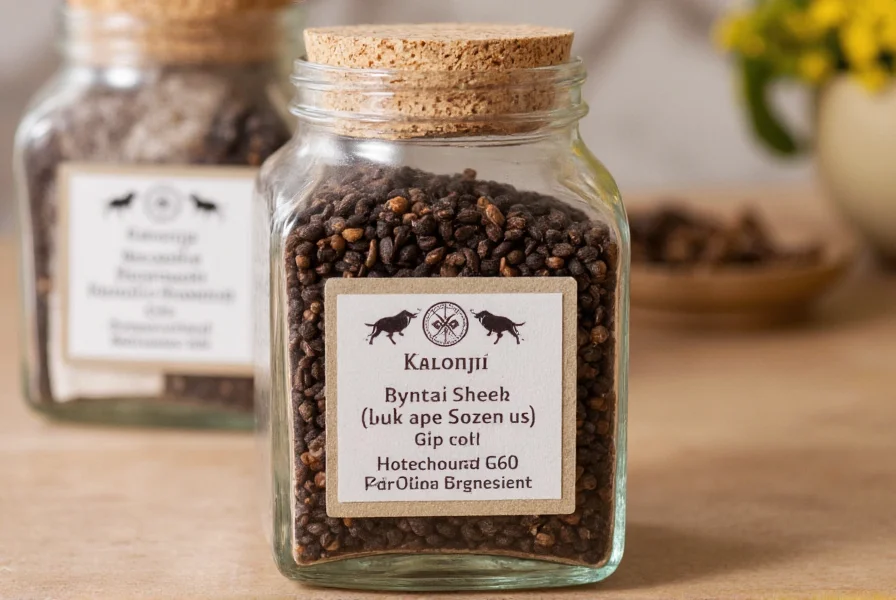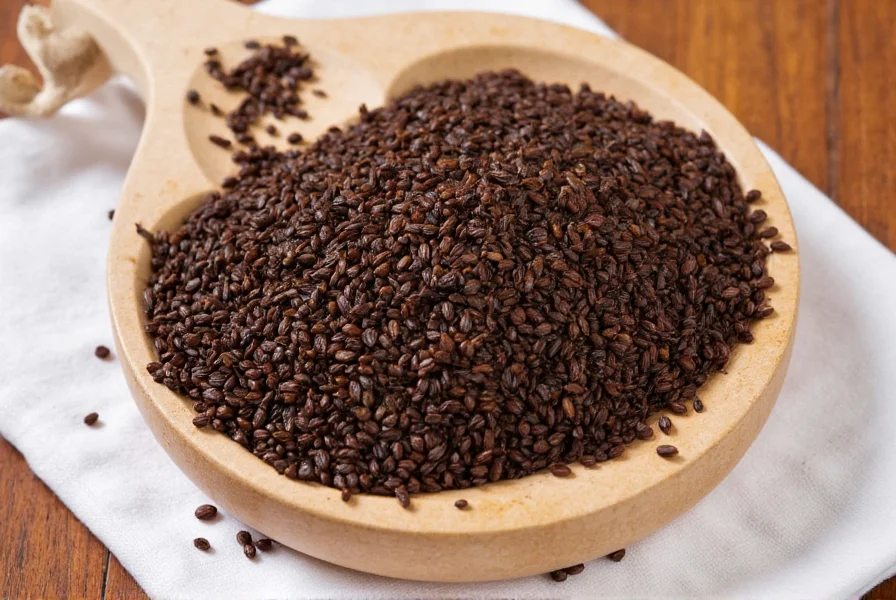For centuries, kalonji seeds have been prized across multiple cultures not only as a culinary staple but also for their potential health-supporting properties. These tiny black seeds, scientifically classified as Nigella sativa, should not be confused with regular cumin or onion seeds despite occasional naming confusion in different regions.
Understanding Kalonji Seeds: Botanical Identity and History
Kalonji (Nigella sativa) belongs to the Ranunculaceae family and has been used since ancient times. Archaeological evidence shows these seeds were found in Egyptian pharaohs' tombs, including Tutankhamun's burial site. The plant grows to about 20-30 cm tall and produces delicate flowers followed by seed capsules containing the characteristic black seeds.
The name "kalonji" comes from Sanskrit kalonji or kaloji, while in Arabic they're known as habbat al-barakah (blessed seed). This historical significance explains why understanding what are kalonji seeds benefits has remained relevant through generations.
Nutritional Composition of Kalonji Seeds
Kalonji seeds pack impressive nutritional density in their small size. A single tablespoon (about 6g) contains approximately:
| Nutrient | Amount per Tablespoon | % Daily Value |
|---|---|---|
| Calories | 37 | 2% |
| Fat | 3.2g | 4% |
| Carbohydrates | 2g | 1% |
| Fiber | 1g | 4% |
| Protein | 1g | 2% |
| Calcium | 18mg | 1% |
| Iron | 1.5mg | 8% |
More importantly, kalonji seeds contain bioactive compounds like thymoquinone (30-48% of the volatile oil), which researchers have studied for its potential antioxidant properties. When exploring kalonji seeds nutritional value, it's essential to recognize these compounds work synergistically rather than in isolation.

Culinary Applications: How to Use Kalonji Seeds in Cooking
Chefs and home cooks value kalonji seeds for their unique flavor profile that combines earthy, nutty, and slightly peppery notes. Unlike many spices, kalonji seeds are typically used whole rather than ground.
For optimal flavor release, how to use kalonji seeds in cooking properly involves tempering them in hot oil at the beginning of the cooking process. This technique, called tadka in Indian cuisine, allows the seeds to sizzle and release their aromatic compounds. They pair exceptionally well with:
- Indian breads like naan and paratha
- Lentil dishes (dal)
- Cheese preparations like paneer
- Vegetable stir-fries
- Chutneys and pickles
In Middle Eastern cuisine, bakers incorporate kalonji seeds into breads like naan and lavash. Some cheese makers even use them to flavor certain varieties of feta. The seeds' versatility explains why they remain a staple in spice cabinets across multiple culinary traditions.
Distinguishing Kalonji from Similar Seeds
Many people confuse kalonji seeds with other small black seeds. Understanding kalonji seeds vs black cumin is crucial because:
- Kalonji (Nigella sativa): Also called black cumin or black seed, but botanically distinct from true cumin
- Black cumin (Bunium persicum): Different plant, stronger flavor, less common
- Onion seeds (Nigella sativa): Actually the same as kalonji - a common misnomer
- Black sesame seeds: Larger, oilier, different nutritional profile
The confusion around is kalonji the same as black seed stems from regional naming differences. Yes, kalonji, black seed, and nigella seeds all refer to Nigella sativa, while true black cumin refers to a different plant altogether.
Traditional Wellness Applications
Across various traditional medicine systems, people have used kalonji seeds for centuries. In Ayurveda, practitioners consider them balancing for all three doshas. Traditional Unani medicine employs them for respiratory support. Many cultures incorporate them into hair care routines, leading to frequent searches for kalonji seeds for hair growth.
It's important to note that while traditional uses provide valuable context, modern scientific research continues to investigate these applications. Most health professionals recommend viewing kalonji seeds as a complementary component of a healthy lifestyle rather than a standalone treatment.
Safety Considerations and Potential Side Effects
When consumed in typical culinary amounts, kalonji seeds are generally safe for most people. However, understanding kalonji seeds side effects becomes important when considering larger quantities:
- Pregnant women should avoid medicinal amounts as they may stimulate uterine contractions
- People taking diabetes medication should monitor blood sugar closely
- Those on blood pressure medication should consult their healthcare provider
- Some individuals may experience allergic reactions
The seeds' potent bioactive compounds mean they can interact with certain medications. Always consult with a qualified healthcare professional before using kalonji seeds therapeutically, especially if you have existing health conditions or take prescription medications.
Proper Storage for Maximum Freshness
To preserve the delicate volatile oils that give kalonji seeds their distinctive flavor and potential benefits, proper storage matters. Keep them in an airtight container away from light and heat. Stored correctly, whole seeds maintain their quality for 1-2 years, while ground seeds lose potency more quickly.

Conclusion
Kalonji seeds represent a remarkable intersection of culinary delight and potential wellness support. Their distinctive flavor enhances countless dishes while their nutritional profile offers valuable compounds. Whether you're exploring traditional uses of kalonji seeds or simply looking to expand your spice repertoire, these versatile seeds deserve a place in your kitchen. Remember that while culinary use is generally safe, therapeutic applications warrant professional guidance.











 浙公网安备
33010002000092号
浙公网安备
33010002000092号 浙B2-20120091-4
浙B2-20120091-4